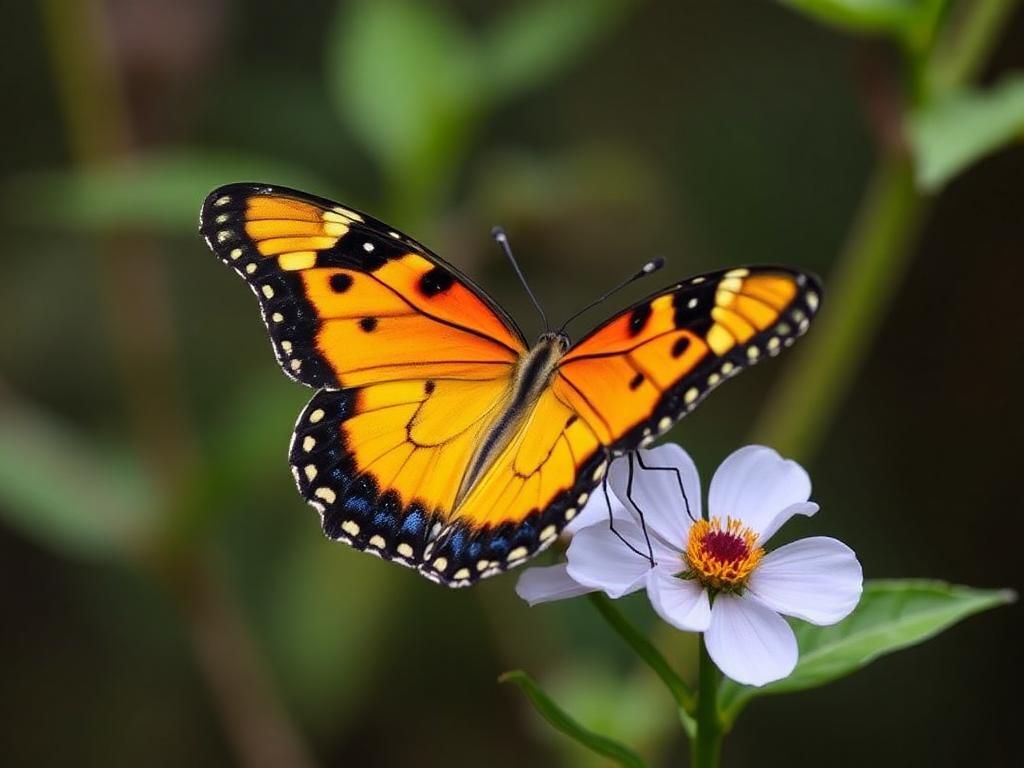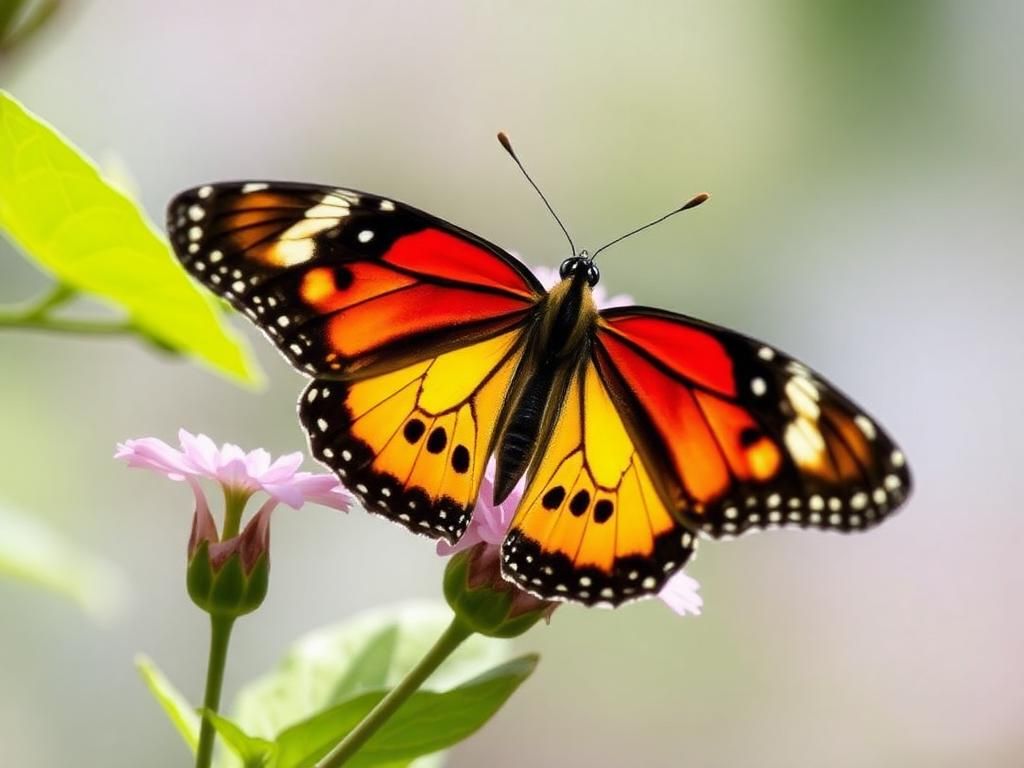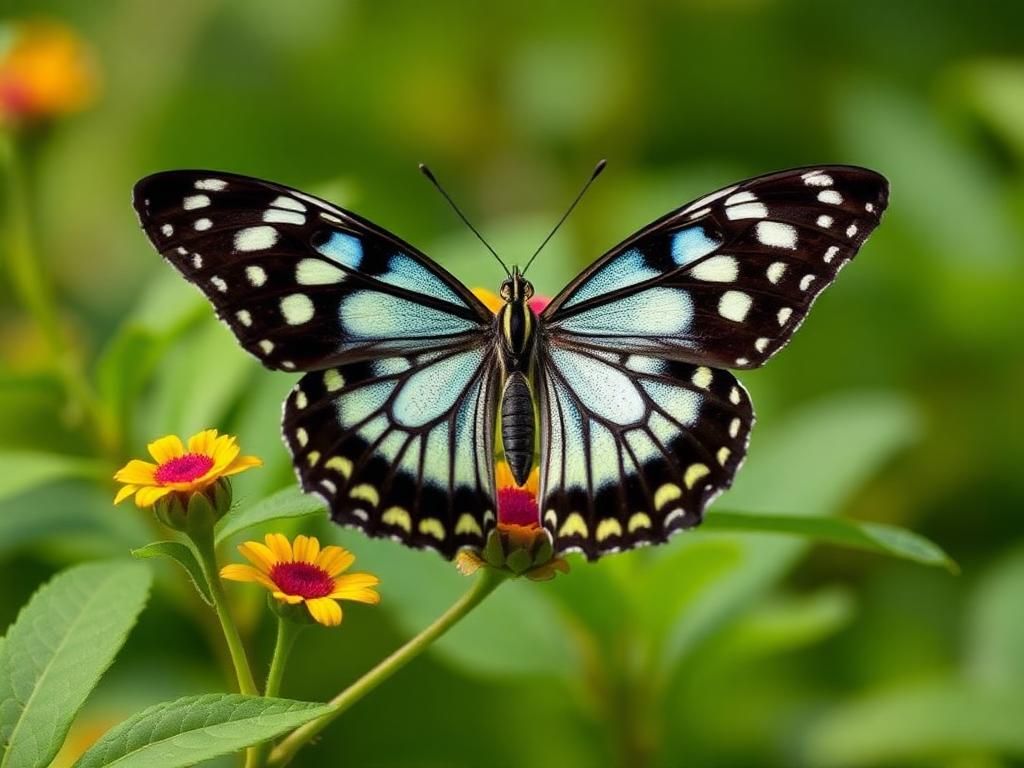Butterflies are among the most charismatic and majestic creatures in nature. Their vibrant colors and delicate structures have captivated human imagination for centuries. Among the myriad of butterfly species, the white butterfly with black stands out due to its unique coloration and patterns, which not only enhance its beauty but also serve vital ecological roles. The significance of the variations in coloration among butterfly species is profound, influencing their behavior, mating, and survival strategies. This article delves into the essence of the infamous white butterfly with black, exploring its visual characteristics, life cycle, habitat, conservation efforts, and ways to appreciate these enigmatic insects.
Description of the White Butterfly with Black
Physical Characteristics
The white butterfly with black presents a striking appearance. The main body color of these butterflies is a lustrous white, with variations that can range from pure white to slightly off-white shades. This variation often depends on the species and environmental conditions. An essential aspect of their beauty lies in their black markings, which can manifest in diverse patterns such as stripes, spots, or edges on the wings. These markings typically serve as a form of camouflage or signaling to potential mates.
In terms of size, the white butterfly with black can vary significantly across species. For instance, the Cabbage White Butterfly, known scientifically as Pieris rapae, has a wingspan that ranges from 1 to 2 inches, while the Black-veined White Butterfly, or Aporia crataegi, can be slightly larger. The flight pattern of these butterflies is often described as graceful but erratic, adding to their enigmatic presence as they flit among flowers in gardens and fields.
Common Species
Several butterfly species fit the description of the white butterfly with black. Two well-known examples include:
- Cabbage White Butterfly (Pieris rapae): Common across North America, this butterfly is frequently seen in gardens, feeding on cruciferous plants.
- Black-veined White Butterfly (Aporia crataegi): Characteristic of European environments, this species is notable for its striking black-veined wings.
These species can typically be found in various habitats, ranging from suburban gardens to open fields, depending on their food sources and environmental needs.
Life Cycle and Behavior
Stages of Development
The transformation of the white butterfly with black is a remarkable journey of metamorphosis comprising four distinct stages:
- Egg Stage: The female butterfly lays small, round eggs often on host plants essential for the caterpillars.
- Larva (Caterpillar) Stage: Upon hatching, the caterpillars feed voraciously on leaves, growing rapidly.
- Pupa (Chrysalis) Stage: The caterpillars then form a chrysalis, undergoing a transformation into adult butterflies.
- Adult Butterfly Stage: Emerging from the chrysalis, the adult white butterfly with black begins its life cycle anew.

Behavior and Habits
The behavior of the white butterfly with black encompasses various fascinating aspects:
- Feeding Habits: These butterflies primarily feed on nectar from a range of flowers. Common sources include milkweed, queen anne’s lace, and various wildflowers.
- Mating Rituals: Males often engage in intricate courtship displays to attract females, showcasing their vibrant colors and patterns.
- Migration Patterns: Although not all species migrate, those that do may travel long distances to find suitable habitats.
Habitat and Ecosystem Role
Preferred Habitats
The white butterfly with black thrives in various environments, showcasing its adaptability. Common habitat types include:
- Gardens: Well-manicured gardens provide essential nectar sources.
- Forests: These areas offer shelter and abundant food.
- Fields: Wildflower-rich fields provide an ideal habitat for egg-laying and feeding.
Climate and geography significantly influence these butterflies’ distribution and abundance, impacting their habitat availability.
Ecological Importance
The white butterfly with black plays a crucial role in its ecosystem:
- Pollination: As these butterflies feed on nectar, they inadvertently contribute to the pollination of many flowering plants, a vital process for ecosystem health.
- Position in the Food Web: They serve as prey for various predators, including birds and other insects. Their presence in the food web supports biodiversity.
Conservation and Threats

Current Threats to Populations
The survival of the white butterfly with black faces numerous challenges:
- Habitat Loss: Urbanization and agricultural expansion erode the natural habitats of these butterflies.
- Pesticides: The widespread use of chemicals in farming significantly impacts their populations and health.
- Climate Change: Alterations in climate patterns affect their breeding and food availability.
Conservation Efforts
Many organizations work diligently to promote the conservation of the white butterfly with black and its habitats:
- Habitat Restoration: Efforts are underway to restore native plants that serve as food sources and breeding grounds.
- Public Education: Educating communities about the importance of butterflies helps foster appreciation and inspire conservation initiatives.
Personal Encounters and Observations
How to Attract White Butterflies with Black to Your Garden
If you wish to attract the white butterfly with black to your garden, consider planting:
- Nectar Plants: Flowers such as milkweed, aster, and verbena are particularly appealing.
- Host Plants: Plant species like cabbage and kale to provide food for caterpillars.
Additionally, designing your garden to promote biodiversity can increase the chances of attracting these stunning butterflies.
Observation Tips
To maximize your chances of observing the white butterfly with black:
- Best Times of Day: Early morning or late afternoon are ideal for butterfly watching.
- Best Locations: Look for them in gardens, fields, and sunny, open areas.
- Photography Tips: Use a macro lens and a tripod for stable, close-up shots. Be patient and quiet to capture their beauty without startling them.
Conclusion
In summary, the white butterfly with black represents not just a unique beauty in nature, but an important ecological player in the environment. Their presence signals healthy ecosystems and the interconnectedness of life. As we strive to conserve their populations and habitats, it becomes vital to appreciate their contribution to biodiversity. Observing and enjoying these stunning insects can lead to a deeper understanding of the importance of all creatures within our shared ecosystem.
Resources and References
Tables: Key Aspects of the White Butterfly with Black
| Feature | Cabbage White Butterfly | Black-veined White Butterfly |
|---|---|---|
| Scientific Name | Pieris rapae | Aporia crataegi |
| Wingspan | 1 – 2 inches | 2 – 3 inches |
| Habitat | Gardens, fields | Forests, meadows |
| Feeding Preferences | Nectar from cruciferous plants | Nectar from various flowering plants |
| Conservation Status | Least Concern | Least Concern |
Frequently Asked Questions (FAQ)
- What is the lifespan of the white butterfly with black? Most species live from a few weeks to several months, depending on environmental factors.
- Are white butterflies with black harmful to plants? No, they are primarily pollinators and do not harm plants directly.
- How can I identify a white butterfly with black? Look for the distinctive white body with black markings, coupled with their erratic flight pattern.
- Do these butterflies migrate? Some species, like the Cabbage White, may show migratory behavior based on seasonal changes.
- How can I support butterfly conservation? You can plant native flowers, reduce pesticide usage, and educate others about butterflies.
- When is the best time to see these butterflies? Early morning and late afternoon during warm months are ideal for observation.
